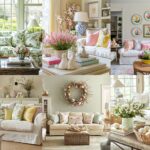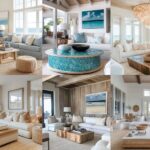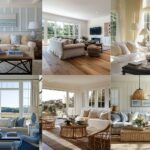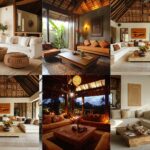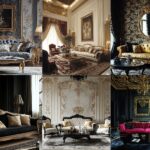Are you looking to transform your living space into an exotic retreat that exudes warmth and elegance? Moroccan interior design may well be just what you need. Known for its vibrant colors, intricate patterns, and luxurious textures, this style brings a unique blend of cultural richness and modern sophistication to any home.
Imagine walking into a room filled with handwoven rugs, ornate lanterns, and plush cushions—each element telling its own story. Moroccan design not only captivates the eye but also creates a cozy atmosphere that’s perfect for relaxation or entertaining guests. Ready to explore how you can infuse your home with this enchanting aesthetic? Let’s dive into the key elements that make Moroccan interior design truly unforgettable.
21 Moroccan Interior Design Ideas And Styles
#1. Traditional Moroccan Coworking Space
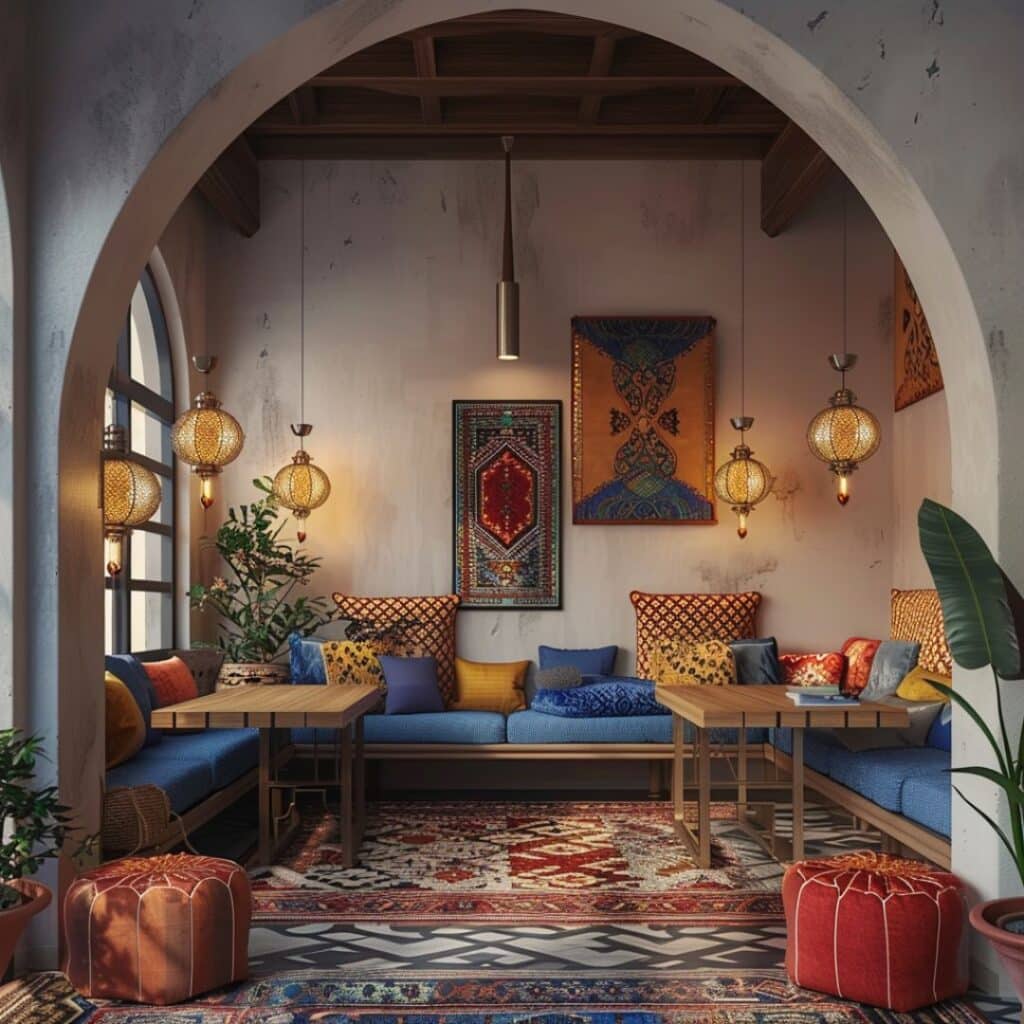
#2. Simple Moroccan Coworking Space
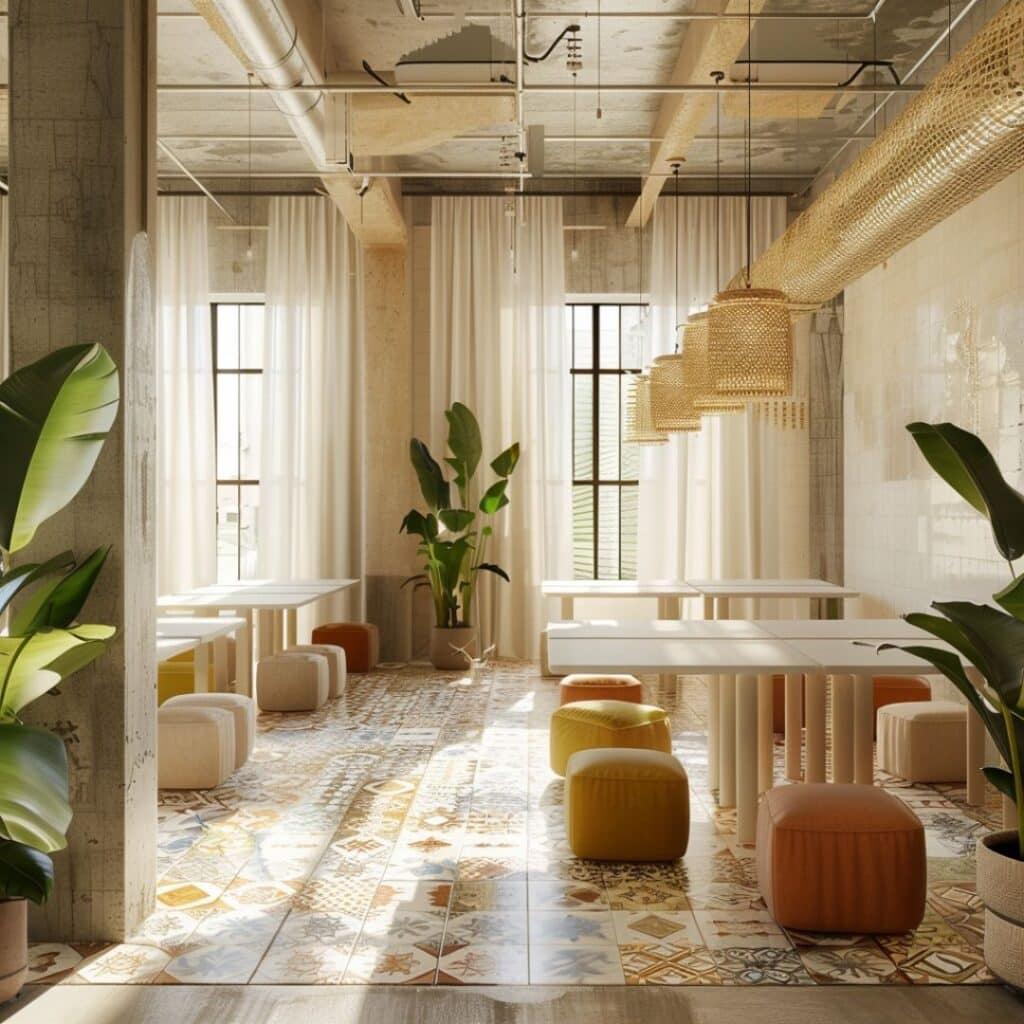
#3. Moroccan Living Room Interior Idea
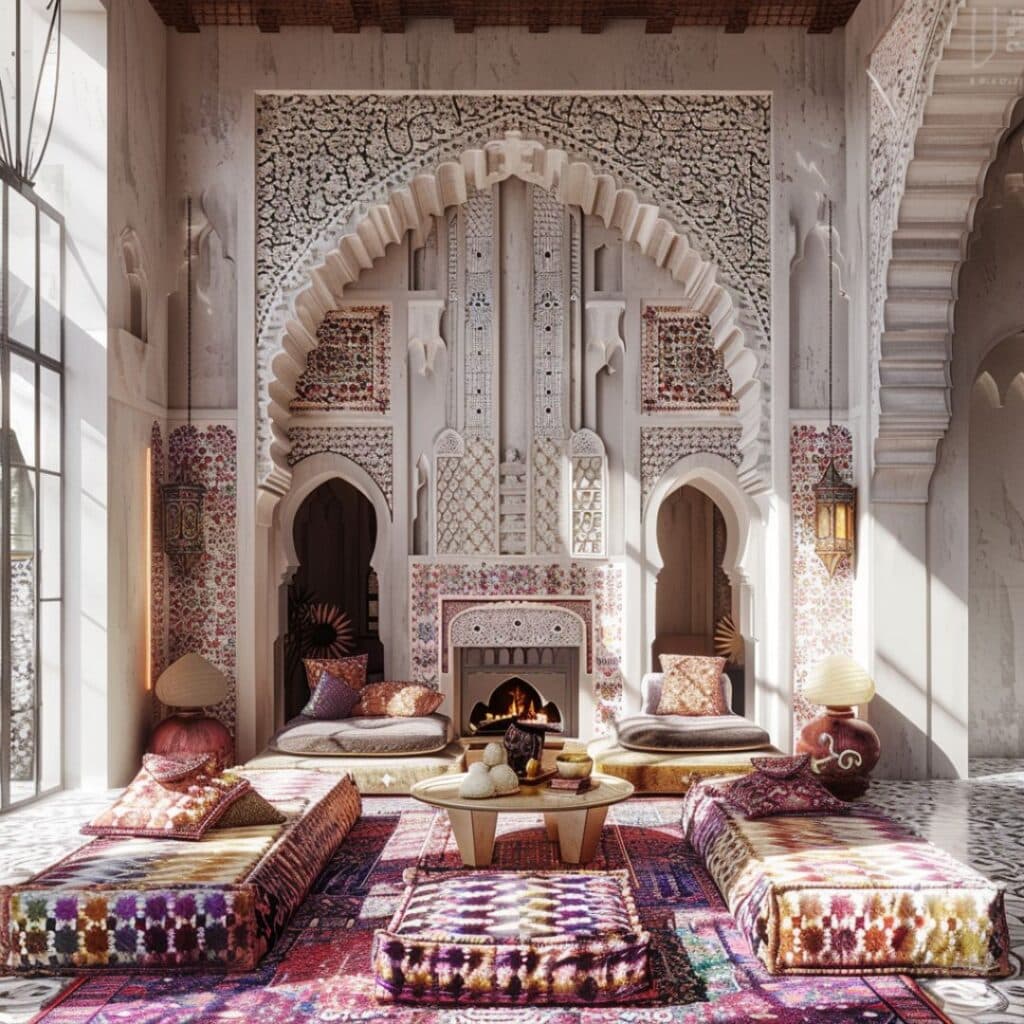
#4. Moroccan Living Room Interior Design

#5. Moroccan Kitchen Interior Idea
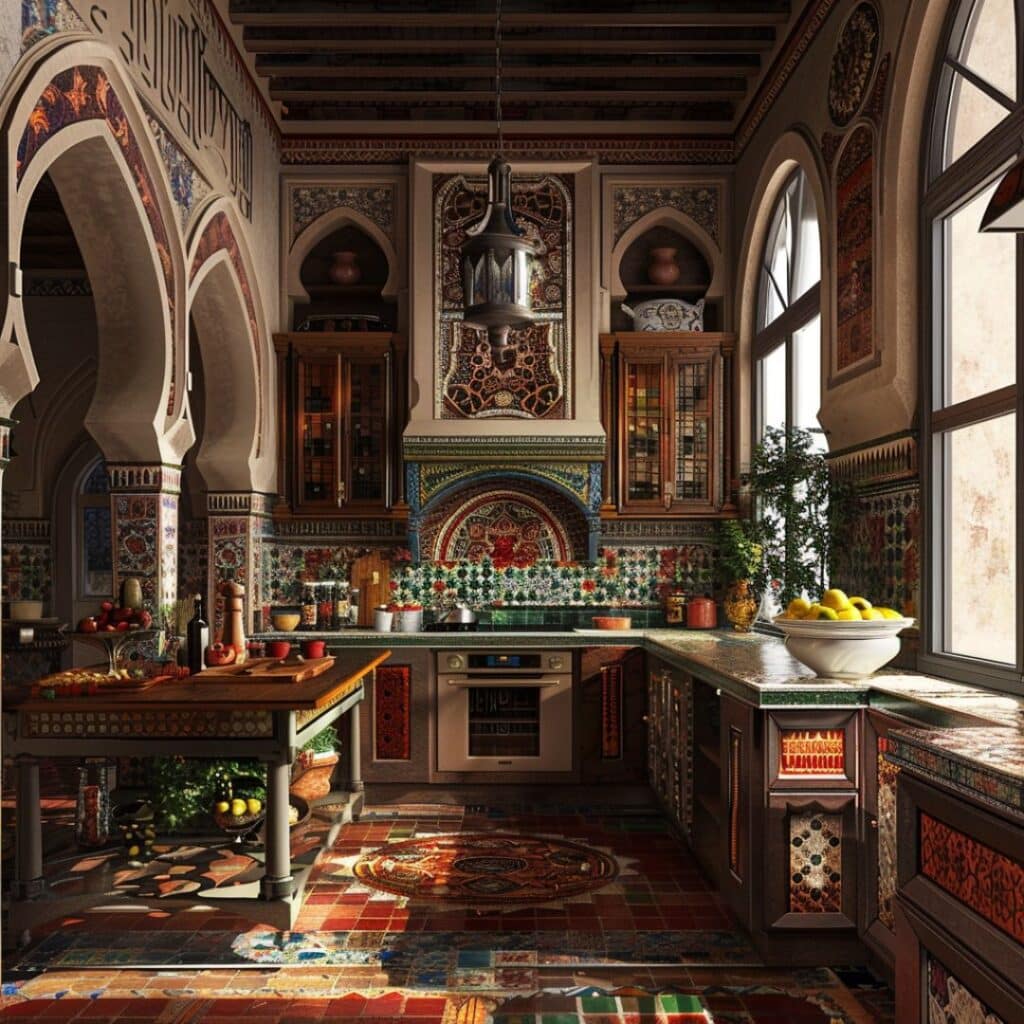
#6. Moroccan Kitchen Interior Design
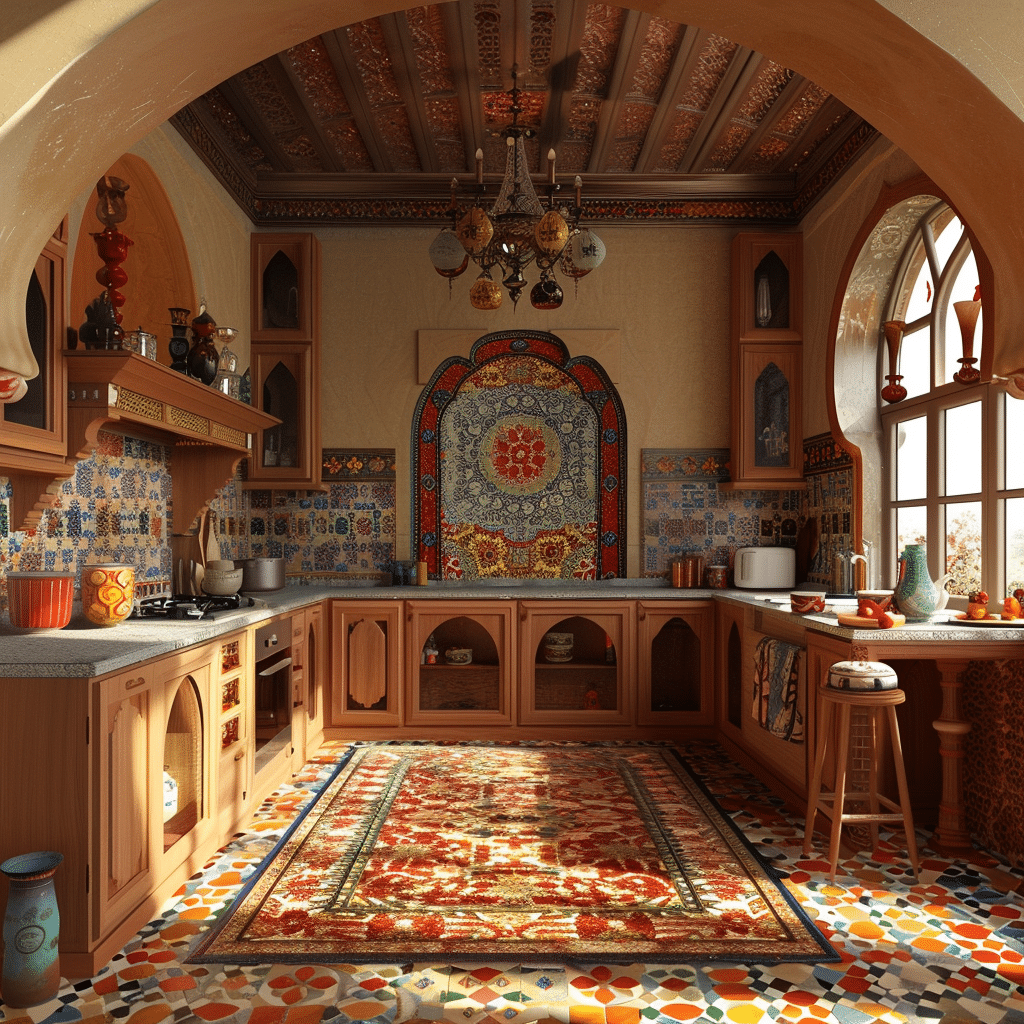
#7. Moroccan Interior Design Coworking Space
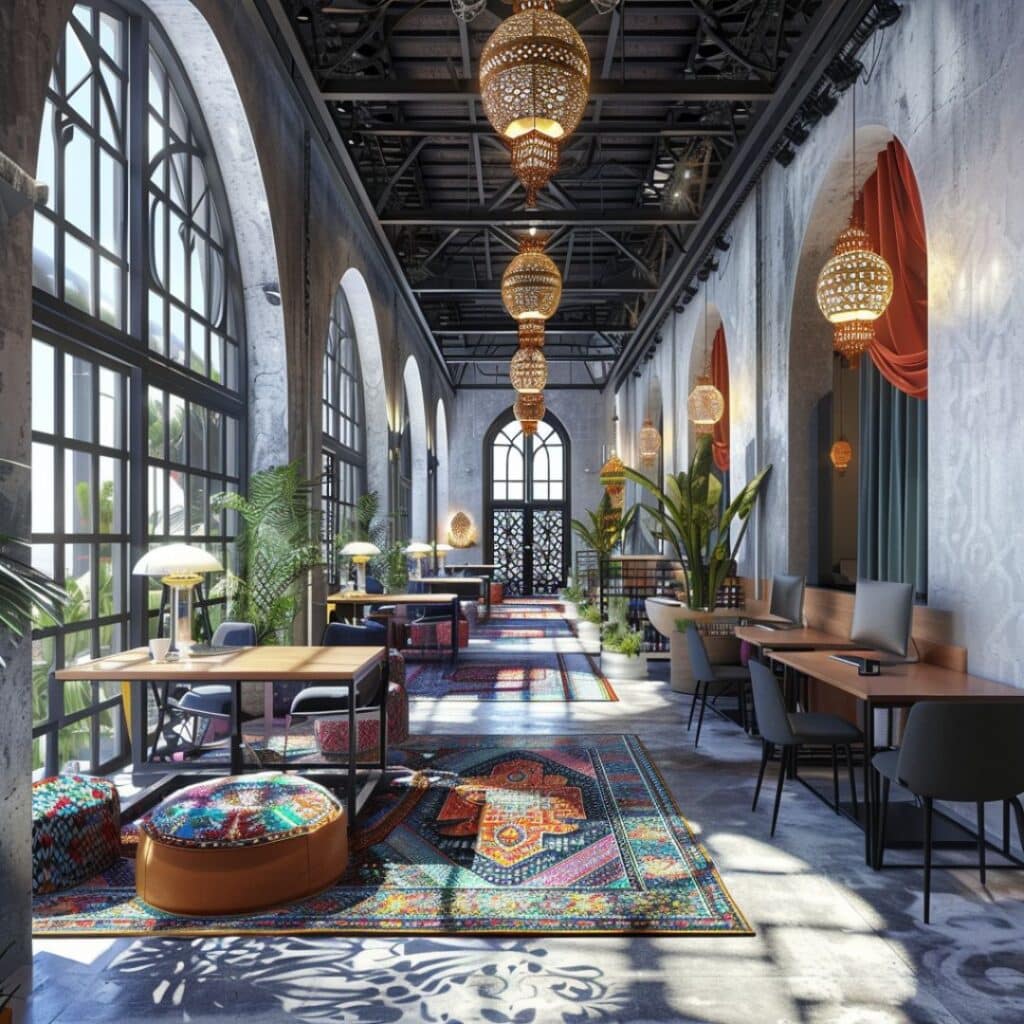
#8. Moroccan Dining Room Interior Design
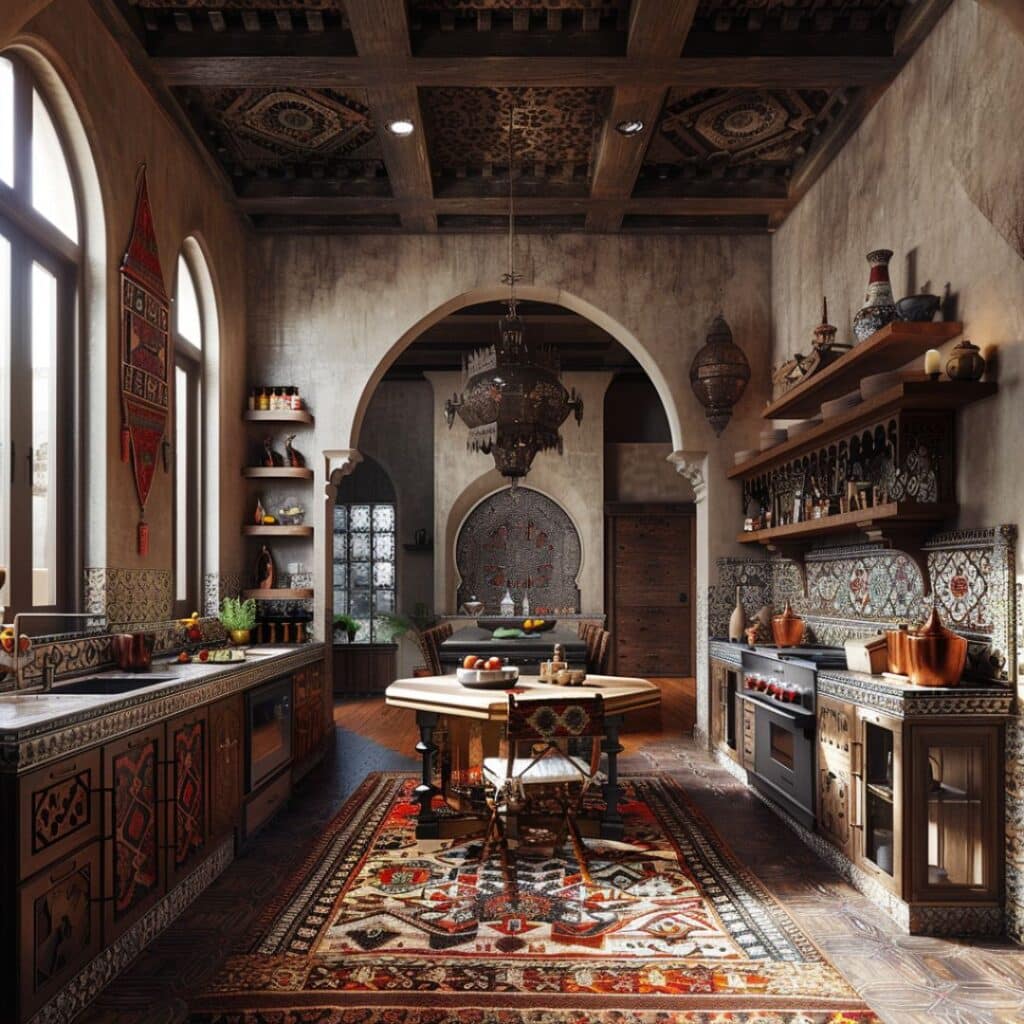
#9. Moroccan Coworking Space
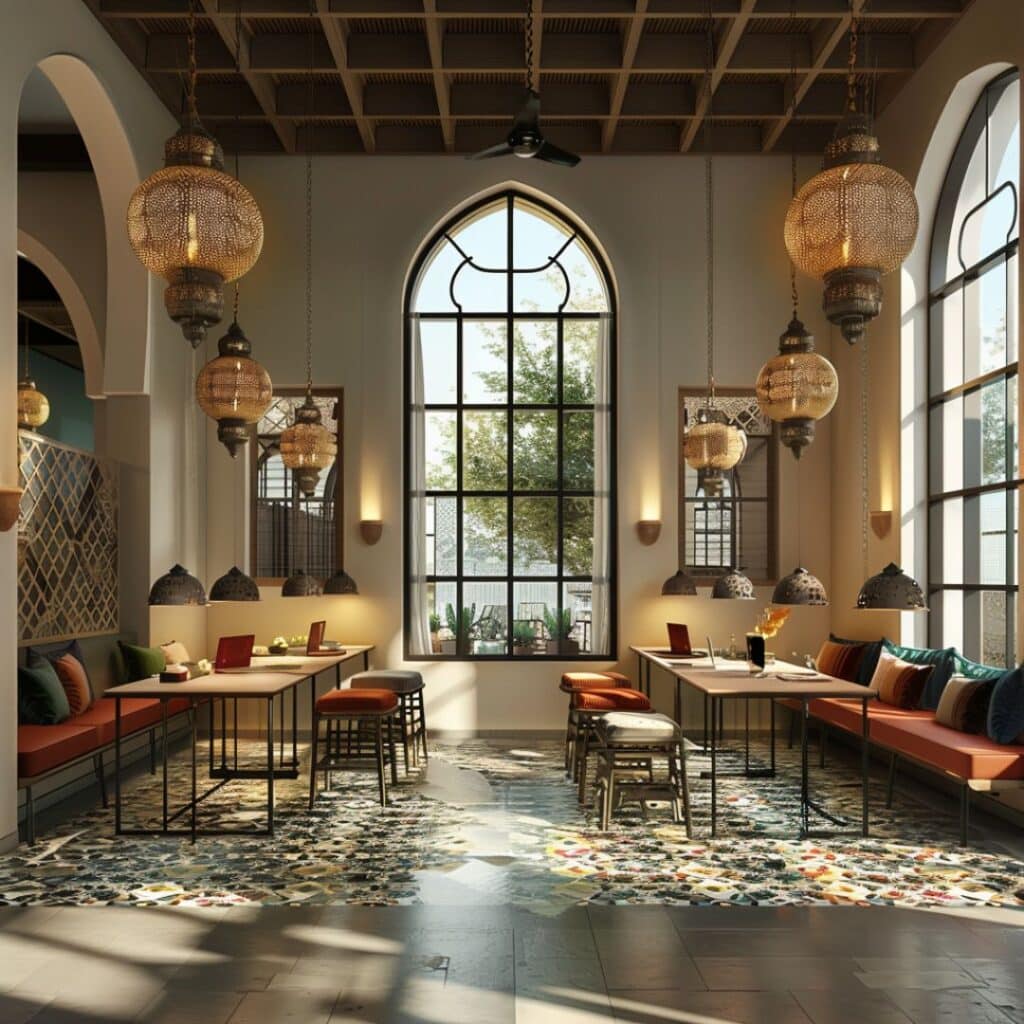
#10. Moroccan Coworking Space Light
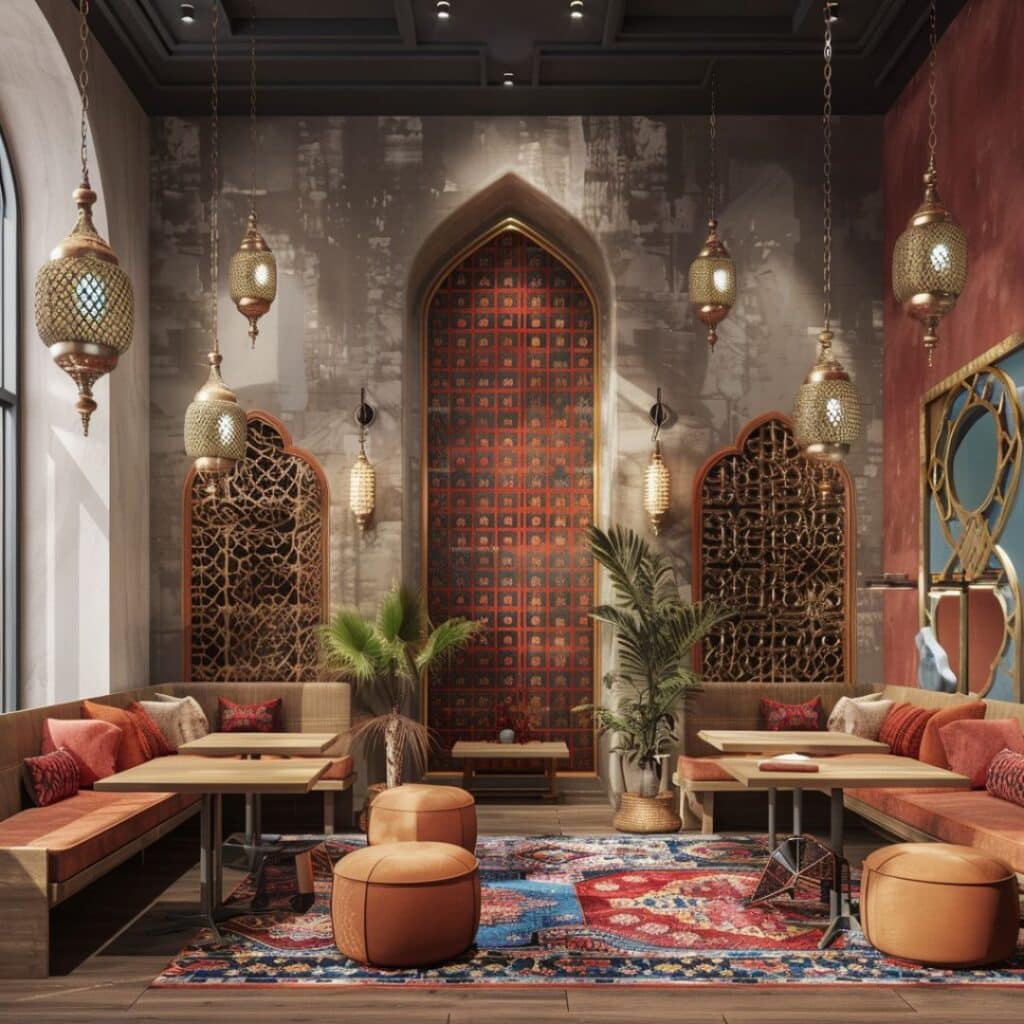
#11. Moroccan Coworking Space Interior Design
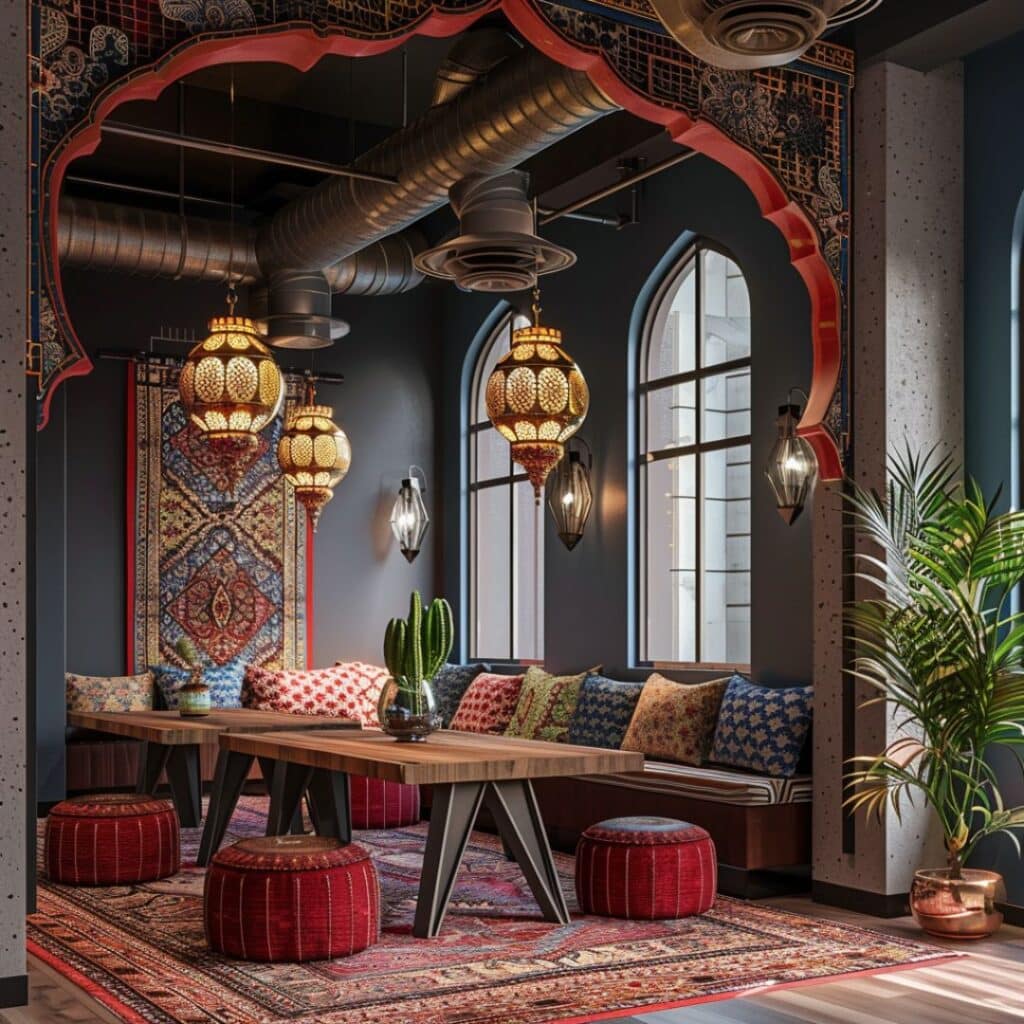
#12. Moroccan Coworking Space Ideas
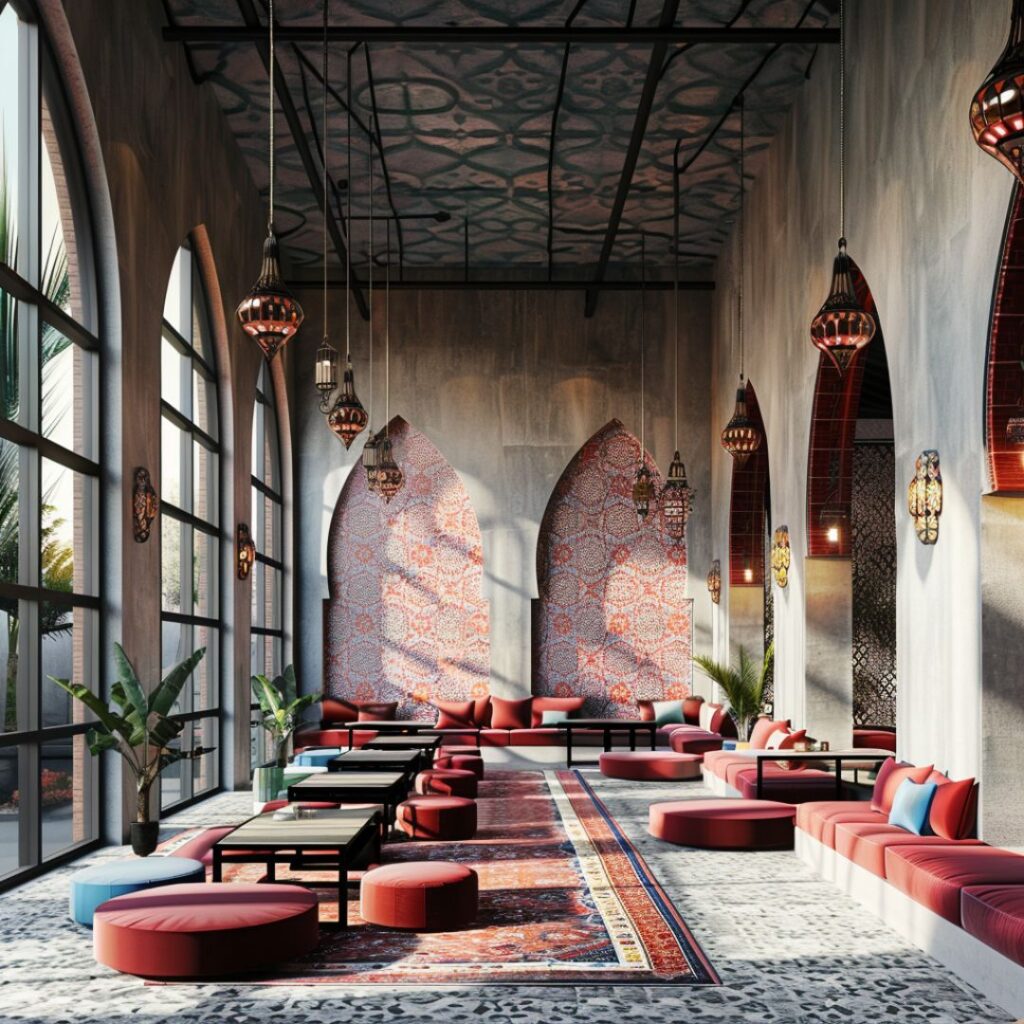
#13. Moroccan Coworking Space Hallway
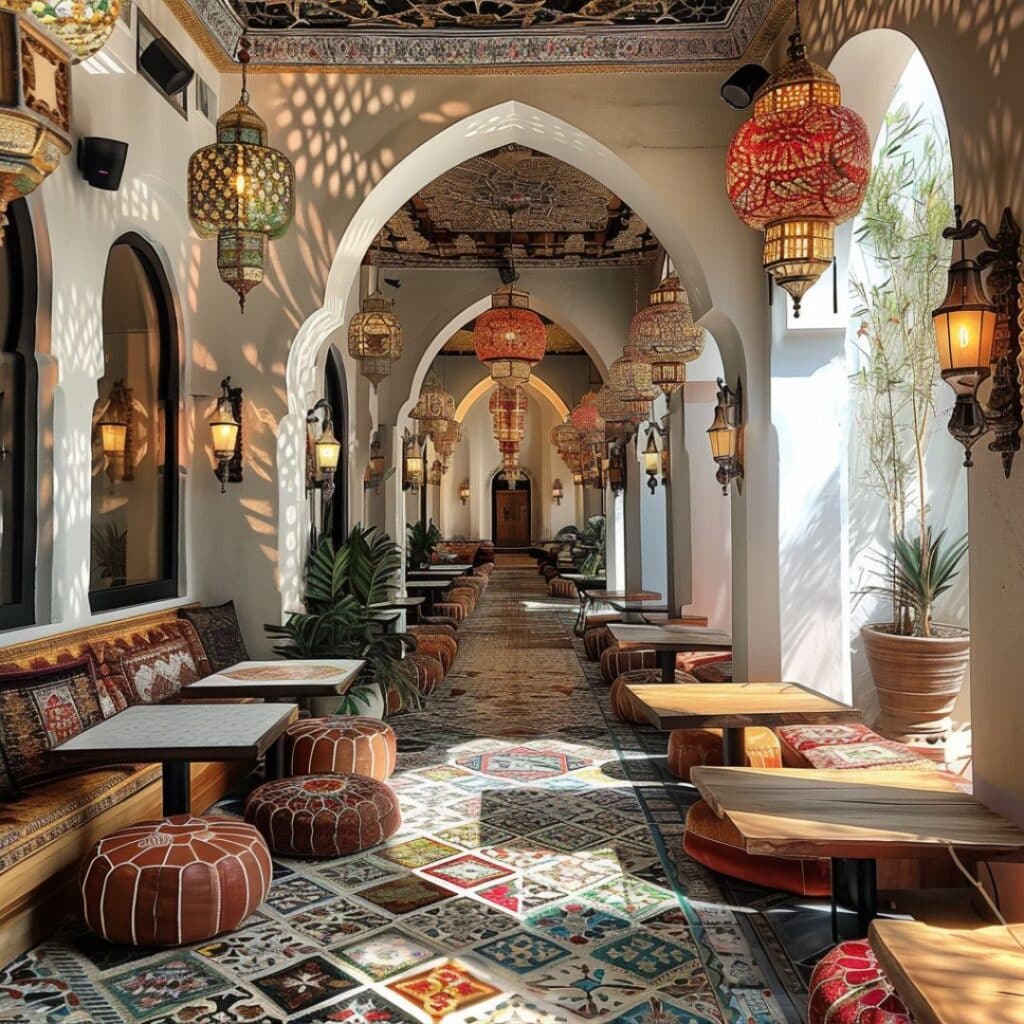
#14. Moroccan Coworking Space Facilities

#15. Moroccan Coworking Space Desks

#16. Moroccan Coworking Space Designs

#17. Moroccan Bedroom Interior Idea

#18. Moroccan Bedroom Interior Design
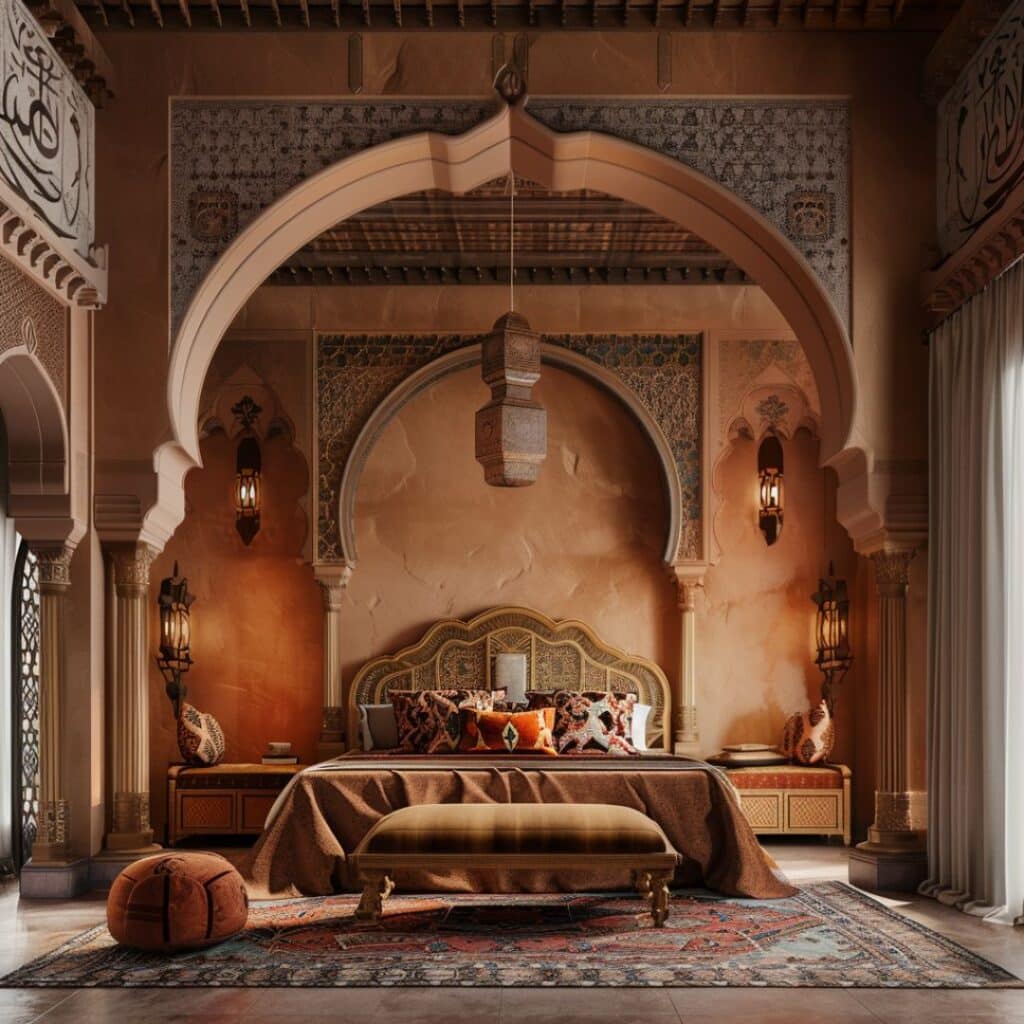
#19. Moroccan Bathroom Interior Idea
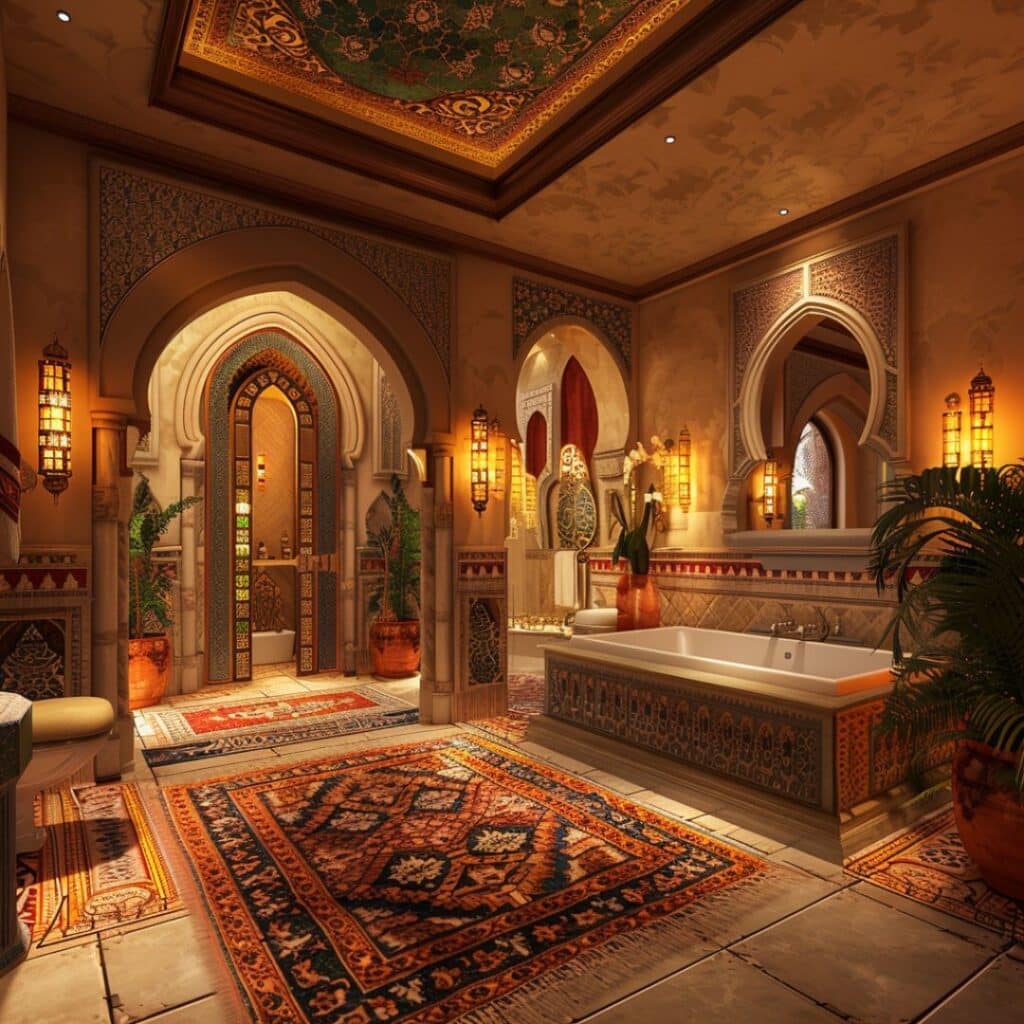
#20. Moroccan Bathroom Interior Design
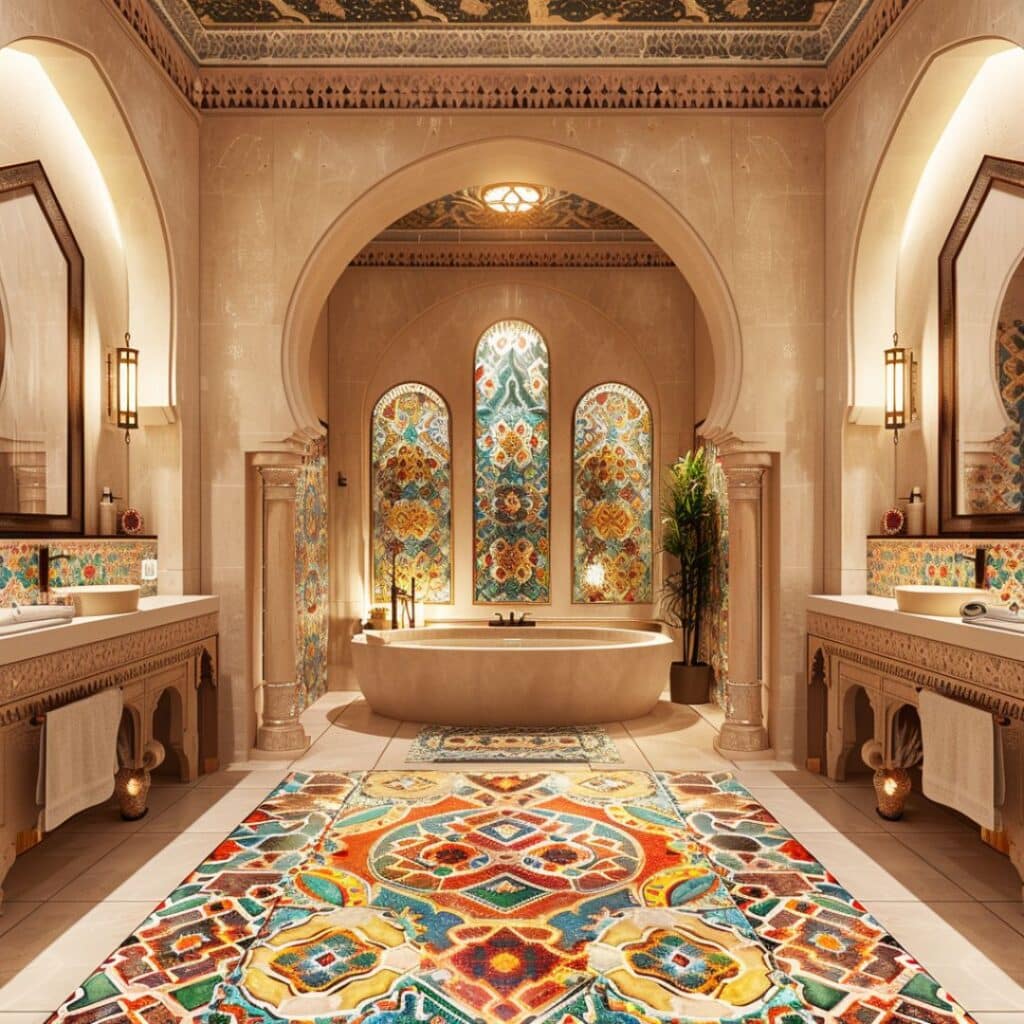
#21. Morden Moroccan Coworking Space
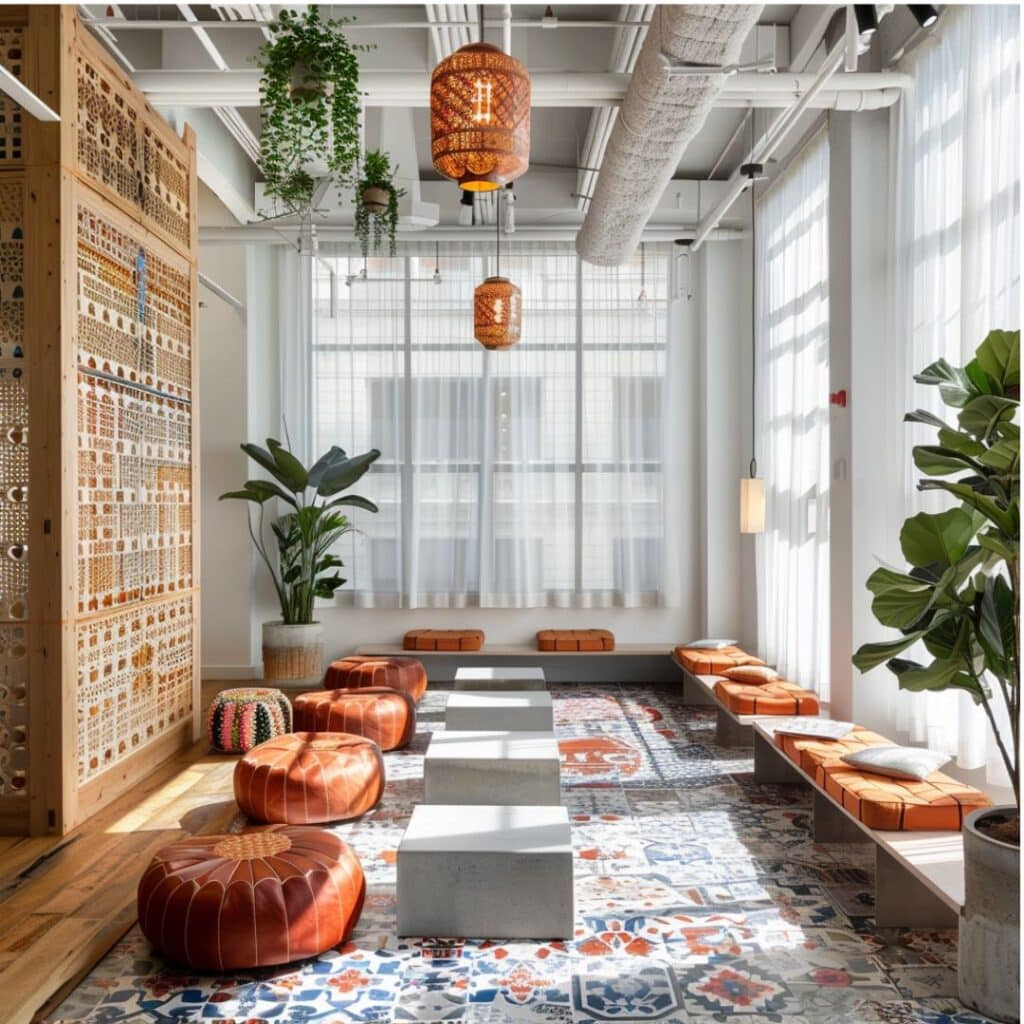
The Essence of Moroccan Interior Design
Moroccan interior design exudes a rich, cultural allure. Its vibrant colors and intricate patterns create a luxurious atmosphere, similar to the eclectic and free-spirited nature of Bohemian interior design.
Key Characteristics
Moroccan interiors feature bold colors like deep reds, blues, and golds. Handwoven rugs, often adorned with geometric patterns, add warmth to floors. Ornate lanterns provide ambient lighting that casts mesmerizing shadows.
Plush cushions in various textures enhance comfort. Intricate tilework on walls and floors adds visual interest. Carved wooden furniture pieces bring an artisanal touch to the space.
Historical Influences
Moroccan design draws from Berber culture with its earthy tones and natural materials. Arab influences introduce arches and Moorish motifs seen in doorways and windows.
Spanish elements appear in the form of colorful ceramics and detailed metalwork. French colonial impacts bring elegance through wrought iron accents and sophisticated furnishings.
These historical layers combine to create a timeless aesthetic that’s both exotic and inviting.
Key Elements of Moroccan Decor
Moroccan interior design captivates with its rich colors, intricate patterns, and luxurious textures. Integrating these elements creates a space that’s both vibrant and sophisticated.
Vibrant Colors and Patterns
Bold hues dominate Moroccan decor. Expect deep reds, brilliant blues, and golden yellows. Patterns often feature geometric shapes or floral designs. Handwoven rugs display intricate motifs that tell stories of cultural heritage. Tilework in kitchens or bathrooms showcases elaborate designs inspired by centuries-old traditions.
Ornate Furniture and Textiles
Furniture in Moroccan interiors is typically carved wood with detailed craftsmanship. Pieces like low tables or ornate cabinets add visual interest to any room. Textiles play a crucial role too—think plush cushions with tassels, embroidered throws, and silk curtains. These items bring comfort while reflecting the lush aesthetic of Moroccan style.
Popular Materials in Moroccan Design
Moroccan interior design often features materials that reflect its rich cultural heritage. These elements contribute to the exotic and elegant aesthetic.
Use of Wood and Metal
Wood and metal are prominent in Moroccan decor. Wooden furniture, like hand-carved cedar armoires, often showcases intricate details. Metal elements such as brass or copper lanterns provide ambient lighting and add a touch of luxury.
Importance of Mosaic and Tile
Mosaic work is iconic in Moroccan interiors. Zellige tiles, with their geometric patterns, adorn walls, floors, and fountains. These tiles create visually stunning surfaces that capture the essence of Moroccan artistry.
Incorporating Moroccan Design in Modern Homes
Incorporating Moroccan design into modern homes adds exotic charm and cultural richness. By focusing on specific elements, you can seamlessly blend Moroccan aesthetics with modern interior design.
Ideas for Living Rooms
Introduce vibrant colors like turquoise, deep reds, and golds. Use handwoven rugs featuring geometric patterns and rich textures. Place ornate lanterns with intricate metalwork for ambient lighting.
Consider low-seated sofas with plush cushions covered in luxurious fabrics. Add carved wooden furniture pieces, such as coffee tables or sideboards, to enhance the room’s aesthetic.
Tips for Bedrooms
Opt for a bold color palette that includes jewel tones. Use intricately patterned bedspreads and pillows to add visual interest. Incorporate Zellige tiles in headboard designs or as accent walls.
Install brass or copper lamps to provide warm lighting. Choose artisanal wooden dressers or nightstands with detailed carvings to complete the look.



